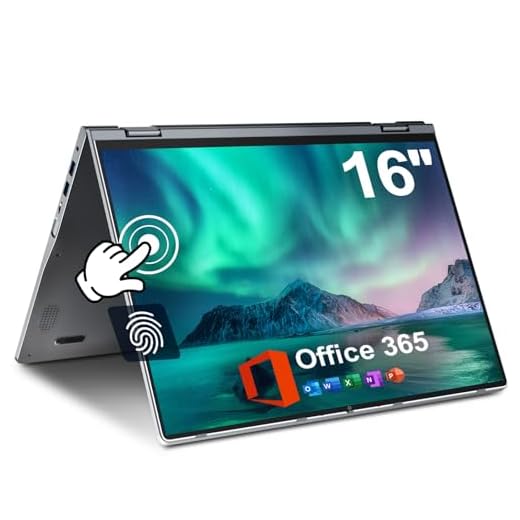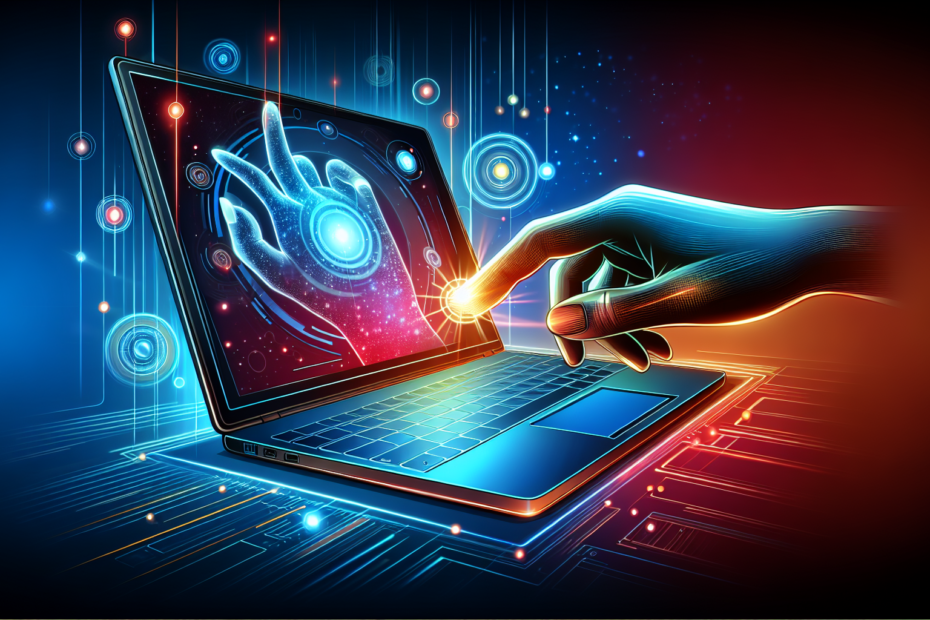







Did you know that touch screens on laptops are not as common as you might think? While touch screens have become increasingly popular on smartphones and tablets, finding a laptop with this feature can be a bit more challenging. But fear not, because in this article, we explore the world of touch screen laptops – their benefits, drawbacks, and the top models available on the market today. So, if you’ve ever wondered if any laptops have touch screens, keep reading to discover the answer and much more.
Overview of Touchscreen Technology
Touchscreen technology allows users to interact with a device by directly touching the display screen. This innovative technology has revolutionized the way we interact with our electronic devices, providing a more intuitive and user-friendly interface. Touchscreens have become increasingly popular in various devices, including smartphones, tablets, and laptops.
Definition of Touchscreen
A touchscreen is a display screen that can recognize and respond to the touch of a user’s fingers or stylus. Instead of relying on physical buttons or keyboards, touchscreens enable users to navigate through menus, input data, and perform various tasks by simply touching the screen. This technology relies on sensors that detect the user’s touch and convert it into commands or actions.
Types of Touchscreen Technology
There are several types of touchscreen technology commonly used in laptops and other devices:
Resistive Touchscreens: This technology consists of two conductive layers with a small gap between them. When pressure is applied to the screen, the layers make contact, and the location of the touch is determined. Resistive touchscreens can be operated with a finger, stylus, or any object that applies pressure.
Capacitive Touchscreens: Capacitive touchscreens are based on the principle of electrostatics. They utilize a layer of indium tin oxide (ITO), which is a conductive material. When a user touches the screen, the electrical characteristics of the ITO layer are altered, allowing the location of the touch to be detected. Capacitive touchscreens can only be operated with a finger or a specialized stylus.
Infrared Touchscreens: Infrared touchscreens use a grid of infrared sensors to detect touch. When an object, such as a finger or a stylus, interrupts the infrared beams, the location of the touch is identified. This technology can support multiple touch points and is known for its durability.
Surface Acoustic Wave (SAW) Touchscreens: SAW touchscreens use ultrasonic waves that are transmitted across the screen’s surface. When the screen is touched, the waves are absorbed, and the location of the touch is determined. SAW touchscreens offer excellent image quality and durability.
Advantages of Touchscreens
Touchscreen technology offers several advantages that enhance the user experience:
Intuitive Interface: Touchscreens provide a more natural and intuitive way of interacting with electronic devices. Instead of relying on physical buttons or keyboards, users can directly touch the screen to access functions or input data.
Improved Productivity: With touchscreens, tasks such as navigating through menus, scrolling, zooming, and selecting options become quicker and easier. This can lead to increased productivity and efficiency, especially in tasks that involve interaction with graphical elements.
Enhanced User Experience: Touchscreens enable a more immersive and engaging user experience. They allow for gestures such as swiping, pinching, and tapping, which can make interactions feel more interactive and enjoyable.
Versatility and Multi-functionality: Touchscreen laptops offer the versatility of both a traditional laptop and a tablet. Users can switch between keyboard input and touchscreen input, depending on their needs and preferences. This multi-functionality allows for a broader range of applications and usage scenarios.
Now that we have discussed the overview of touchscreen technology, let’s delve into the history of touchscreen laptops.
History of Touchscreen Laptops
Early Attempts at Touchscreen Laptops
The concept of a touchscreen laptop was first introduced in the early 1980s. However, the technology was still in its infancy, and the early attempts at touchscreen laptops were not successful. These early devices were bulky, expensive, and lacked the necessary computing power to deliver a seamless touch experience.
Despite the initial setbacks, companies continued to explore the potential of touchscreen laptops. In the late 1990s and early 2000s, convertible laptops with swiveling or rotating displays started to gain traction. These laptops allowed users to rotate the screen and use it as a tablet, providing touch functionality.
Advancements in Touchscreen Technology
Over the years, significant advancements in touchscreen technology paved the way for the development of more practical and functional touchscreen laptops. Capacitive touchscreen technology, which allows for multi-touch gestures, emerged as the preferred choice due to its superior accuracy and responsiveness.
In addition to improved touchscreens, advancements in display technology, such as the introduction of IPS panels and higher resolutions, further enhanced the touch experience on laptops. These advancements resulted in more vibrant colors, wider viewing angles, and better overall visual quality.
Increased Popularity of Touchscreen Laptops
As touchscreen technology matured and became more affordable, touchscreen laptops gained increasing popularity among consumers. The rise of smartphones and tablets with touchscreens played a significant role in driving the demand for touchscreen laptops. Users became familiar with touch-based interactions and desired the same usability on their laptops.
Furthermore, the release of Windows 8 in 2012, which featured a touch-centric user interface, further fueled the demand for touch-enabled laptops. Manufacturers began to incorporate touchscreens into their laptop designs to cater to the growing market demand.
Now that we have explored the history of touchscreen laptops, let’s take a closer look at some major laptop brands that offer touchscreen options.

Major Laptop Brands with Touchscreen Options
Several major laptop brands offer a wide range of touchscreen laptops to cater to different user preferences. Here are some of the prominent laptop brands known for their touchscreen options:
Dell
Dell is known for producing a diverse lineup of touchscreen laptops across various price points. From affordable 2-in-1 convertibles to high-performance gaming laptops, Dell offers a range of options for users seeking a touchscreen experience.
HP
HP offers a comprehensive range of touchscreen laptops, including sleek and lightweight 2-in-1 convertibles and powerful traditional laptops. The brand is known for its attention to design, build quality, and user-friendly features.
Lenovo
Lenovo has established itself as a frontrunner in the touchscreen laptop market with its Yoga series. These 2-in-1 convertible laptops boast innovative hinge designs, exceptional build quality, and seamless touch functionality.
Asus
Asus offers an extensive lineup of touchscreen laptops tailored to different user needs. The Asus ZenBook series, in particular, combines sleek design with touchscreens, making them a popular choice among professionals and students.
Acer
Acer provides a wide range of touchscreen laptops that prioritize affordability without compromising on performance. Its Aspire and Swift series offer various options for those seeking a touchscreen experience on a budget.
Microsoft
Microsoft’s Surface lineup has become synonymous with premium touchscreen laptops. These devices combine cutting-edge hardware with Microsoft’s own software for a seamless and integrated touch experience.
Apple
Apple, known for its macOS ecosystem, introduced touch functionality in their MacBook Pro models. While limited to the Touch Bar, it still offers a touch-enabled experience for specific tasks.
Now that we have explored the major laptop brands with touchscreen options, let’s discuss the different types of touchscreen laptops available in the market.
Different Types of Touchscreen Laptops
2-in-1 Convertible Laptops
2-in-1 convertible laptops, as the name suggests, offer the flexibility of being used as both a traditional laptop and a tablet. They typically feature a hinge or a detachable keyboard that allows the screen to be rotated or detached for tablet-like usage. These laptops are ideal for users who require the versatility of both input methods.
Traditional Laptops with Touchscreens
Traditional laptops with touchscreens retain the conventional clamshell design but incorporate touch functionality into the display. They are similar to regular laptops but provide the added benefit of touch input. These laptops are suitable for users who primarily prefer a laptop form factor but occasionally desire touch interaction.
Gaming Laptops with Touchscreens
Gaming laptops with touchscreens are designed specifically for gamers who want the best of both worlds. These laptops feature powerful processors, high-refresh rate displays, and dedicated graphics cards to handle demanding games. The touchscreen functionality provides an extra layer of control and convenience, especially in strategy games or additional user interface controls.
Now that we understand the different types of touchscreen laptops, let’s explore the factors to consider when choosing a touchscreen laptop.

Factors to Consider When Choosing a Touchscreen Laptop
Choosing the right touchscreen laptop can be overwhelming due to the variety of options available in the market. Here are some key factors to consider when making your decision:
Operating System Compatibility
One of the crucial factors to consider is the compatibility of the touchscreen laptop’s operating system with your requirements and preferences. Windows-based laptops offer extensive touchscreen support, while macOS laptops have limited touch functionality. Consider whether the operating system aligns with your productivity needs and desired touch experience.
Display Quality and Resolution
The display quality and resolution play a vital role in the touch experience. Opt for a touchscreen laptop with a high-resolution display for better visual clarity and crispness. Additionally, consider factors like color accuracy, brightness, and viewing angles to ensure an immersive and enjoyable touch experience.
Touchscreen Technology Accuracy
Different touchscreen technologies offer varying levels of accuracy and responsiveness. Capacitive touchscreens are generally more accurate and responsive compared to resistive touchscreens. Consider the type of touchscreen technology used in the laptop and evaluate its performance in terms of precision and touch tracking capabilities.
Battery Life
Touchscreen laptops tend to consume more power compared to traditional laptops due to the additional hardware required for touch functionality. Consider the battery life of the laptop and ensure it meets your usage requirements, especially if you plan on using the touchscreen extensively on the go.
Processing Power and Performance
The processing power and performance of the laptop are critical for a seamless touch experience, especially when multitasking or running resource-intensive applications. Consider the processor, RAM, and storage options to ensure the laptop can handle your specific usage needs, whether it be casual browsing, content creation, or gaming.
Price Range
Touchscreen laptops are available across a wide price range, from budget-friendly options to high-end premium models. Set a budget and consider the features and specifications that align with your needs. It is essential to strike a balance between affordability and the desired functionality to make the best choice for your requirements.
Considering these factors will help you select a touchscreen laptop that aligns with your needs and preferences.
Now, let’s explore the benefits of using a touchscreen laptop.
Benefits of Touchscreen Laptops
Using a touchscreen laptop offers several benefits that enhance your computing experience:
Improved Productivity and Efficiency
The intuitive touch interface enables quicker and seamless navigation, making tasks such as scrolling, zooming, and selecting options more efficient. Interacting directly with the screen reduces the need for additional peripherals or complex keyboard shortcuts, boosting productivity in various applications.
Enhanced User Experience
Touchscreen laptops provide a more engaging and immersive user experience compared to traditional laptops. The ability to use gestures such as swiping, pinching, and tapping adds a layer of interactivity and makes the user interface feel more intuitive and enjoyable.
Versatility and Multi-functionality
With a touchscreen laptop, you have the flexibility to switch between traditional keyboard input and touch input, depending on your needs. This versatility allows you to adapt to different tasks and usage scenarios, whether it’s drafting an email, sketching a design, or watching videos.
Intuitive and Interactive Interface
Touchscreen laptops offer an interface that mimics interaction with physical objects, such as flipping pages, dragging and dropping, or resizing windows. This intuitive interface makes it easier for users of all ages and technical backgrounds to navigate through applications and perform tasks seamlessly.
Now, let’s discuss the limitations of touchscreen laptops.
Limitations of Touchscreen Laptops
While touchscreen laptops offer numerous benefits, they also have some limitations to consider:
Potential Screen Smudging and Fingerprints
Touchscreens are prone to smudging and fingerprints, especially with frequent use. This can affect the display quality and may require regular cleaning to maintain optimal visibility and touch accuracy.
Decreased Precision in Certain Applications
In certain applications or tasks that require precise input, such as graphic design or intricate editing, touchscreen laptops may not offer the same level of precision as a mouse or stylus. For highly detailed work, a dedicated input device may be more suitable.
Limited Ergonomics for Prolonged Use
Extended use of a touchscreen laptop, especially in a laptop or tablet mode, may lead to ergonomic issues. Constantly reaching out to touch the screen, especially on larger laptops, can strain the arms, wrists, and neck. Proper ergonomics, such as using a separate keyboard and a stand, may help alleviate these concerns.
Now, let’s explore some additional accessories and features that can enhance the touchscreen experience on laptops.
Touchscreen Laptop Accessories and Features
Stylus Pens
Stylus pens are a popular accessory for touchscreen laptops, providing more precision and control compared to finger-based input. They allow for precise drawing, writing, and navigating, making them ideal for artists, note-takers, and designers.
Palm Rejection Technology
Palm rejection technology is designed to prevent accidental touches on the screen when using a stylus or touch input. This feature can improve the accuracy and overall touch experience, ensuring that only intentional touches are registered.
Multi-touch Gestures
Most touchscreen laptops support multi-touch gestures, allowing you to perform various actions using more than one finger. These gestures can include pinch-to-zoom, two-finger scrolling, or three-finger swiping, enabling quick and intuitive navigation.
Screen Protectors
Screen protectors are essential for protecting the display of your touchscreen laptop from scratches, smudges, and fingerprints. They come in various materials, such as tempered glass or film, and can provide additional benefits like anti-glare or privacy features.
Now, let’s explore the future of touchscreen technology in laptops.
Future of Touchscreen Technology in Laptops
Touchscreen technology continues to evolve, and we can expect exciting advancements in the near future:
Advancements in Touchscreen Technology
Touchscreen technology itself is likely to improve, offering even more accurate and responsive touch experiences. Manufacturers are constantly working on developing new touchscreen technologies that enhance precision, reduce latency, and improve overall usability.
Integration of Artificial Intelligence
The integration of artificial intelligence (AI) into touchscreen laptops has the potential to revolutionize the way we interact with our devices. AI algorithms can analyze patterns, recognize gestures, and personalize the touch interface based on individual usage patterns, further enhancing the user experience.
Virtual and Augmented Reality Experiences
As virtual reality (VR) and augmented reality (AR) technologies become more mainstream, touchscreen laptops may incorporate these technologies to deliver immersive experiences. Touchscreens can act as an additional input method, enabling users to interact with virtual objects or manipulate augmented reality elements directly on the screen.
In conclusion, touchscreen laptops have come a long way since their early attempts, and they now offer a wide range of features, functionality, and versatility. With significant advancements in touchscreen technology, an increasing number of laptop brands providing touch-enabled options, and the multiple benefits they offer, touchscreen laptops have become a popular choice for many users. The future of touchscreen technology looks promising, with ongoing advancements and the integration of AI and immersive technologies. As touchscreens continue to evolve, they will likely play an even more significant role in our computing experiences, providing more intuitive and interactive ways to interact with our laptops.







